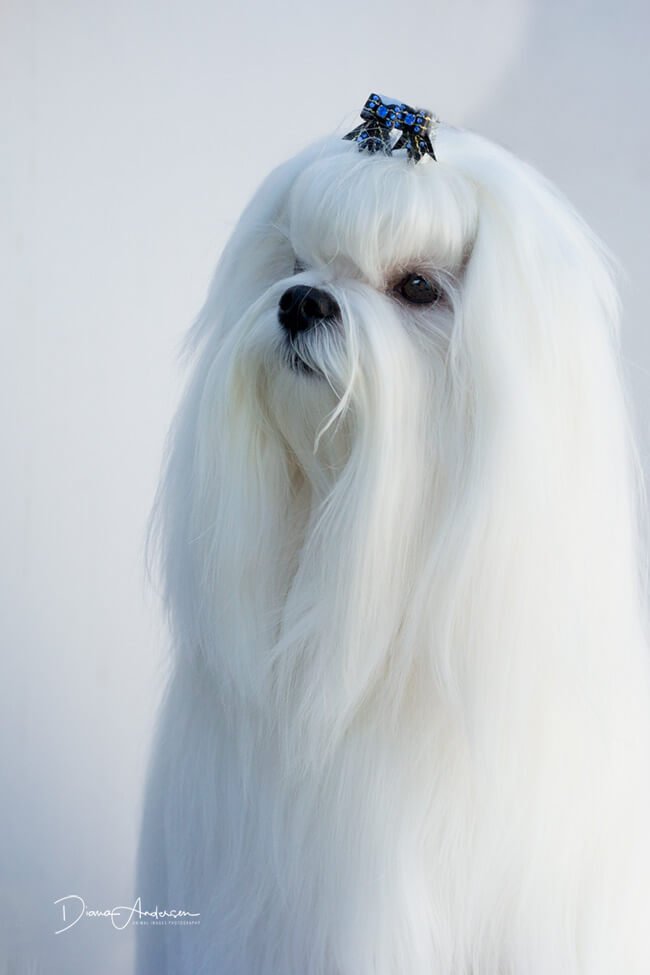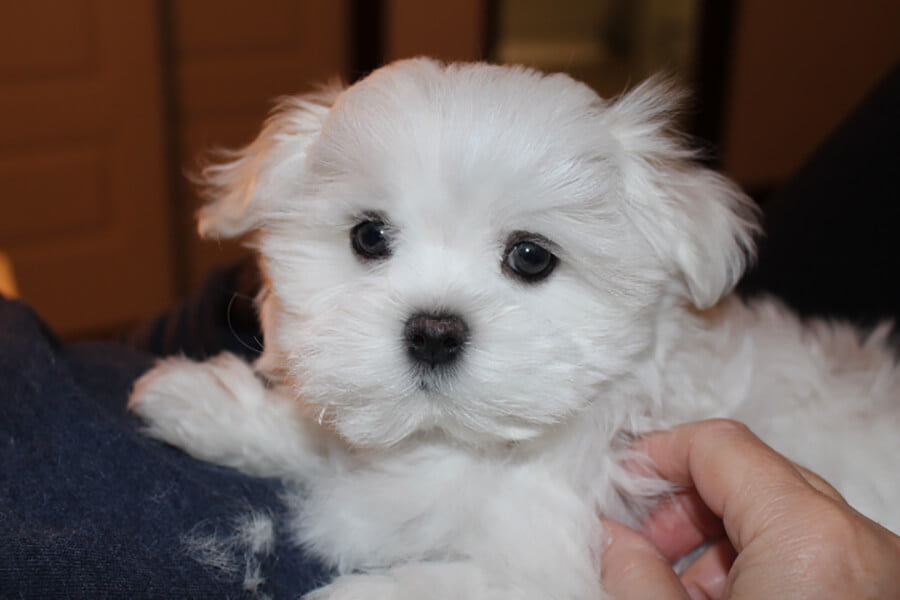
The Maltese Breed
The Maltese is an ancient breed has been known by a variety of names throughout the centuries. It has also been known in English as the “Maltese Terrier”, the “ancient dog of Malta,” and the “Roman Ladies’ Dog”. The Kennel Club officially settled on the name “Maltese” for the breed in the 19th century.
Maltese are bred to be companion dogs. They are extremely lively and playful, and even as a Maltese ages, its energy level and playfulness remain fairly constant. They adore humans, and prefer to stay near them. The Maltese is very active within a house, and, preferring enclosed spaces, does very well with small yards. For this reason, the breed also fares well in apartments and townhouses. Some Maltese can suffer from separation anxiety. They need to be trained from an early age through crate training, that it is okay to be on their own.
If you are interested in owning a Maltese, please check our puppy page for availability and contact me direct on 0409 989 848.
Coat Care
Maltese have no undercoat, and have little to no shedding if cared for properly. They are considered to be hypoallergenic, and many people who are allergic to dogs may not be allergic to the Maltese.
The Maltese coat will continue to grow if it is not cut, and will eventually reach the ground. If you are intending to keep your Maltese with any length of coat, it will require daily grooming (all over) to keep it from matting.
General Care
Even though the Maltese is a toy dog and will not grow to be much more than 3.5kg, they perceive themselves to be ten feet tall and bullet proof!! It is up to us to ensure they don’t injure themselves unnecessarily and cause joint issues later in life. Never allow your Maltese to jump off furniture. It doesn’t matter if it seems like a small jump to you, it can still cause leg problems.
Many toy breeds are susceptible to luxating or slipping patella. A dog may have this and you are not aware as it doesn’t really cause them any issues. In a higher grade luxating patella, your dog will limp and favour the sore leg and some may even require surgery. This issue can be caused, and is certainly exacerbated by, environmental factors such as dogs jumping from furniture on to slippery or hard floors, and puppies running and slipping on hard floors.
Don’t over exercise your young puppy. Whilst they have short bursts of boundless energy, this should be harnessed and used for mental stimulation and training sessions to keep them engaged, rather than letting them run to wear themselves out. By all means let them exercise, but moderation is key, and supervision is essential.
Feeding
As an owner of Maltese for over 25 years, I have learnt that they do not do well on a diet high in protein. They need a good quality dry food that has a protein content of around 25%.
Maltese can be picky eaters, and they may decide that what you are feeding them is not to their liking and they would rather have what you are having. Please – never indulge them in this! Your dog will eat when it is hungry but if you start to try giving it something you perceive they will enjoy more, they will soon learn that you will indulge them.
Your Maltese should weigh between three and four kilograms fully grown. This will vary depending on the stature of your dog. Most of my Maltese weigh around 3 to 3.5 kilograms after two years which is generally when they reach full maturity. If you cannot feel your dogs ribs, or it does not have a distinct waistline, then it is overweight.
Eyes
Maltese dogs can exhibit signs of tear staining underneath the eyes. Dark staining in the hair around the eyes (“tear staining”) can be a problem in this breed, and is mostly a function of how much the individual dog’s eyes water and the size of the tear ducts.
This problem does seem to be largely genetic, and I have found that if they stain as puppies when teething, they will probably grow out of it. Diet can also play a part in this and whilst there are many products on the market that claim to reduce tear stains, I have found that keeping the eyes free of hair and clean and dry, can help control it.
Ears
Your Maltese will have hair that grows in the ear. It can vary with the amount and rate it grows and needs to be plucked out. If you are having your dog groomed regularly, then your groomer should do this.
Your dogs ears should be cleaned regularly with a product that your vet will sell, particularly if your dog starts to scratch at its ears, you should have it seen to.
Teeth
The Toy Dog breed are susceptible to teeth issues, and particularly dogs which are not fed on dry biscuits or regularly given anything hard to chew which can help to keep teeth clean. Introducing a toothbrush for dogs when your puppy is young, will commence them on a good habit for life.
Sterilisation
There are many varying opinions on when is the right time to have your puppy sterilised. You should be guided by your vet, but the general acknowledgment in toy dogs is not before six months of age. In the case of male puppies, the tendency to mark territory begins as hormones become active so nipping this in the bud is a good thing for your sanity.

Useful Links
Swan Valley Vet
www.swanvalleyvet.com.au
For those who live North or East of Perth – highly recommend Dr Meg Braunstein and her team.
Kudah Vet
www.kudahvet.com.au
For those who live south of Perth – very experienced team.
Royal Canin
www.royalcanin.com
We use and recommend products from Royal Canin.
Vebo Pet
www.vebopet.com.au
Great site for any of your pet carrier and crate needs, and puppy play pens.
Plush Puppy
www.plushpuppy.com.au
Great products for Maltese Coats.
